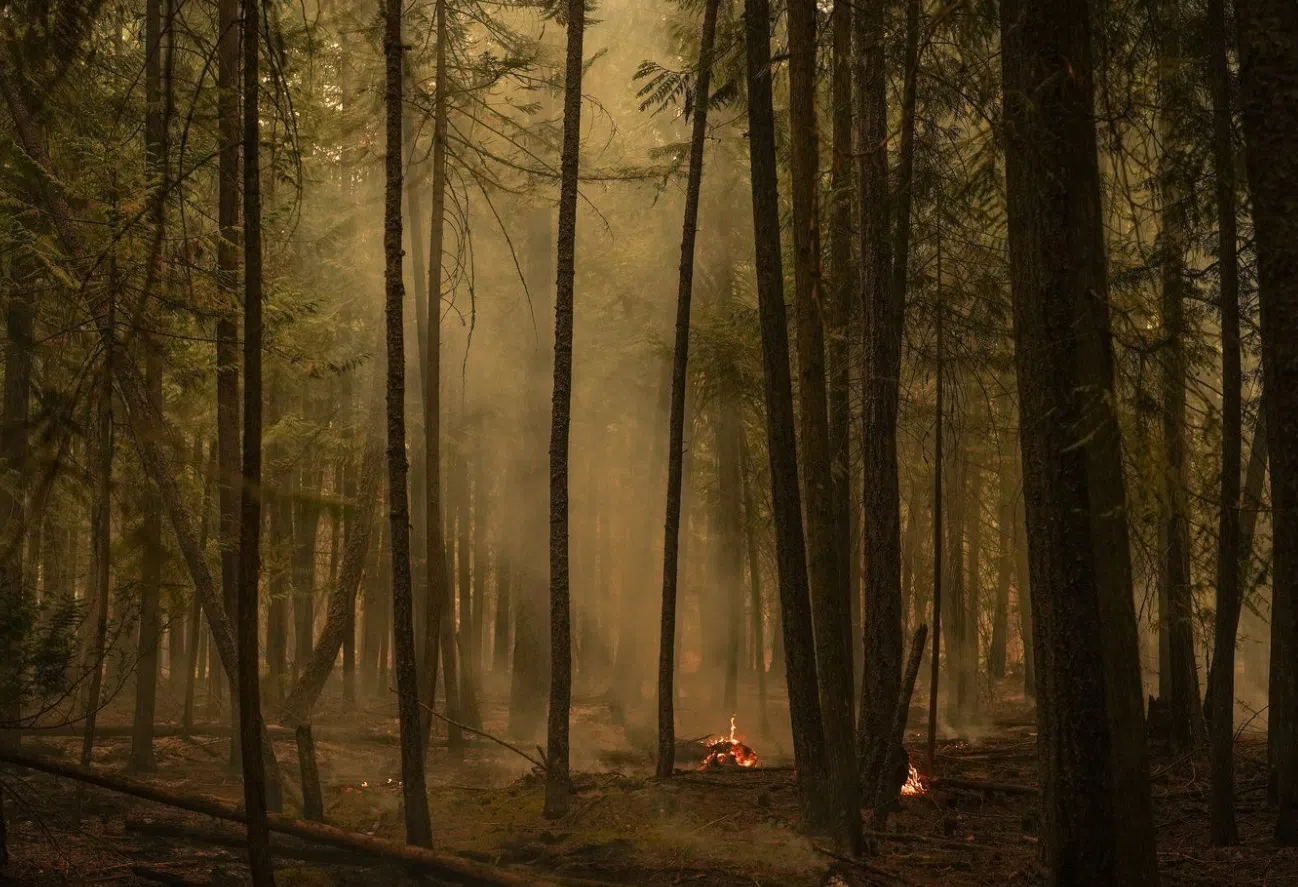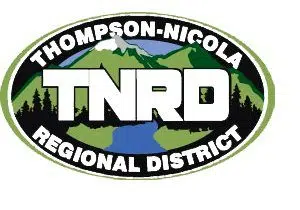
Hot spots from the Lower East Adams Lake wildfire burn in Scotch Creek as seen on Aug. 20, 2023. (Photo via Darryl Dyck/The Canadian Press)
The B.C. Government has introduced new measures to try and increase the use of wildfire-damaged timber in a bid to support the forestry sector while speeding up forest regeneration.
It made new regulatory and pricing changes that came into effect on April 1 to allow for quicker recovery of wildfire-damaged timber that would be used in sawmills, pulp and pellet mills.
“During my visits in forestry communities throughout the province, speeding up salvage is something I’ve been hearing a lot from people,” Andrew Mercier, B.C.’s Minister of State for Sustainable Forestry Innovation said, in a statement.
“Making the salvage of fire-damaged wood faster, easier and more economic means more forestry operations can access fire-damaged wood, supporting forestry-dependent regions and forestry workers.”
The Province says the updated pricing guidelines better reflect the price of wildfire-damaged wood in stumpage fees and in the associated costs of salvage logging, making it “more economical for businesses to salvage damaged wood.”
“The pulp and paper industry has always used wood considered to be waste – sawdust, shavings, chips and others – to make household staples,” Joe Nemeth, the General Manager of the BC Pulp and Paper Coalition said.
“Wildfire salvage is yet another excellent, sustainable source of fibre. With government increasing the ability to access this burned timber, our mills, our employees and our communities have greater stability.”
The Province says it has issued salvage cutting permits for almost 1.4 million cubic metres of timber – about 28,000 logging truck loads worth – after the fires last year.
In addition to the regulatory changes, the B.C. government is also convening what it calls a wildfire salvage leadership committee that will oversee the implementation, measuring, and reporting on salvage progress. It is also working on a new wildfire salvage guidebook.
“This government initiative will give the mill access to more fibre, which will contribute to sustaining our operations in the long run,” Thomas Hoffman, the Fibre Manager for the Kruger Mill in Kamloops said.
“Seeing partners working towards a shared goal and coming up with innovative solutions to support the industry, First Nations and the community is the way forward.”
Hoffman told City Council last year that the Kamloops mill – which directly employs 340 people – is increasing its use of fire-affected wood and slash piles, where possible.
“We’ve talked to Interfor, Tolko, West Fraser, and Weyerhaeuser about accessing the stuff that historically would have piled and burned, and they’ve been for the most part quite cooperative,” Hoffman said, at the time.















